#Late Period-Ptolemaic Period
Text

An Egyptian wood polychrome mummy mask
Late Period-Ptolemaic Period, circa 664-30 B.C.
#An Egyptian wood polychrome mummy mask#Late Period-Ptolemaic Period#circa 664-30 B.C.#ancient artifacts#archeology#archeolgst#history#history news#ancient history#ancient culture#ancient civilizations#ancient egypt#egyptian history#egyptian antiquities#egyptian art#ancient art
46 notes
·
View notes
Text
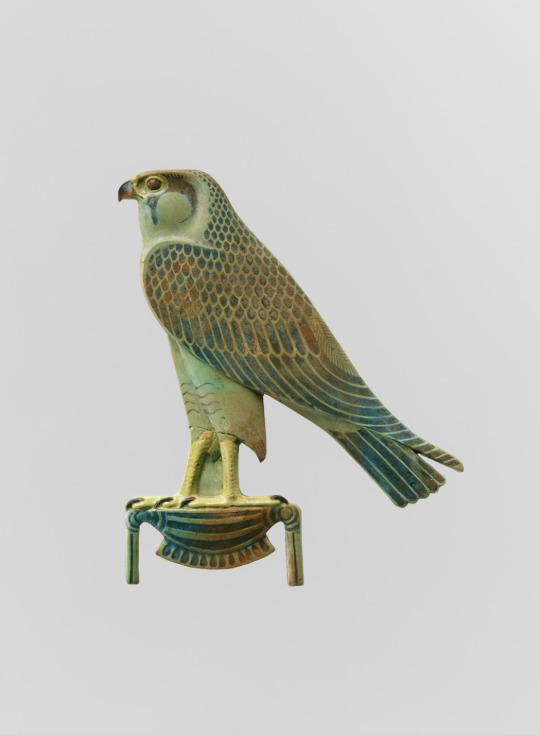
Inlay Depicting "Horus of Gold"
Egypt, Late Period–Ptolemaic Period, 4th century B.C
688 notes
·
View notes
Text

Statuette of pantheistic god Bes
Bronze inlaid with gold.
Late Period or the Ptolemaic Period, 664-30 BC.
Now in the the Fondation Gandur pour l'Art, Geneva.
"Despite his appearance, which changed in many details over time, Bes was deemed beneficent to humans and he was accepted by all classes of Egyptians as a powerful apotropaic deity. He was especially associated with the protection of children and of pregnant women and those giving birth..." Bes was believed to provide protection from snakes among other noxious forces; this statuette shows him in motion stepping on serpents. But Bes was also associated with many of the good things in life: sex, music, and merriment.
"... [In] his later composite form Bes is depicted as the head and sometimes body of a four-armed, winged and many-headed god with the tail of a falcon and the attributes of many of the deities with whom he was combined..."
― Complete Gods and Goddesses of Ancient Egypt, by Richard H. Wilkinson
641 notes
·
View notes
Text


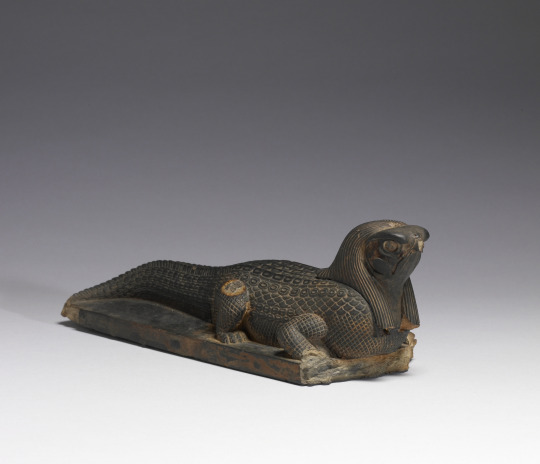
~ Statue of a Crocodile with the Head of a Falcon.
Culture: Egyptian
Date: ca. 380-250 B.C.
Period: Late Period-early Ptolemaic Period; 30th Dynasty
Medium: Steatite
#ancient#ancient art#history#museum#archeology#ancient egypt#ancient sculpture#ancient history#archaeology#Egyptian#egyptology#Egypt#crocodile#falcon#ptolemaic#late period#30th dynasty#steatite#ca. 390 b.c.#ca. 250 b.c.
3K notes
·
View notes
Text

A stela of Bes, looking fabulous as usual. He faces out of the stela, brandishing a sword in his right hand and two serpents in his left. He's naked except for a belt. Above him is the winged sun.
When: Late Period - Ptolemaic Egypt
Where: Museo Barracco, Rome
170 notes
·
View notes
Text

Ancient Egyptian faience inlay depicting a falcon with spread wings. Artist unknown; 4th cent. BCE (Late Period or early Ptolemaic). Now in the Metropolitan Museum of Art.
#art#art history#ancient art#Egypt#Ancient Egypt#Egyptian art#Ancient Egyptian art#Late Period#Ptolemaic#Ptolemaic Egypt#Ptolemaic art#animals in art#birds of prey#falcon#inlay#faience#Metropolitan Museum of Art
1K notes
·
View notes
Text

Head of a lion, Late Period–Ptolemaic Period, 400–300 B.C.
Gypsum plaster,
H. 42.5 x W. 40 cm (16 3/4 x 15 3/4 in.)
On view at The Met Fifth Avenue
#art#history#design#style#archeology#sculpture#antiquity#head#lion#egypt#late period#ptolemaic#gypsum#plaster#the met
209 notes
·
View notes
Text
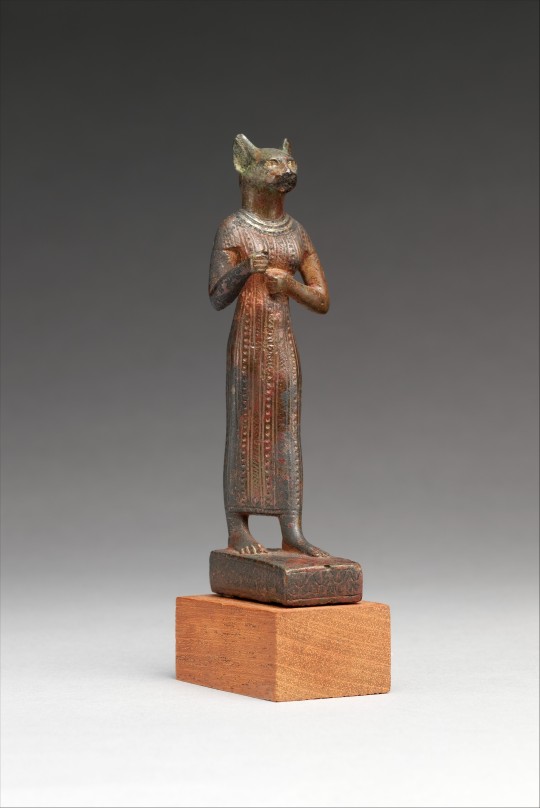
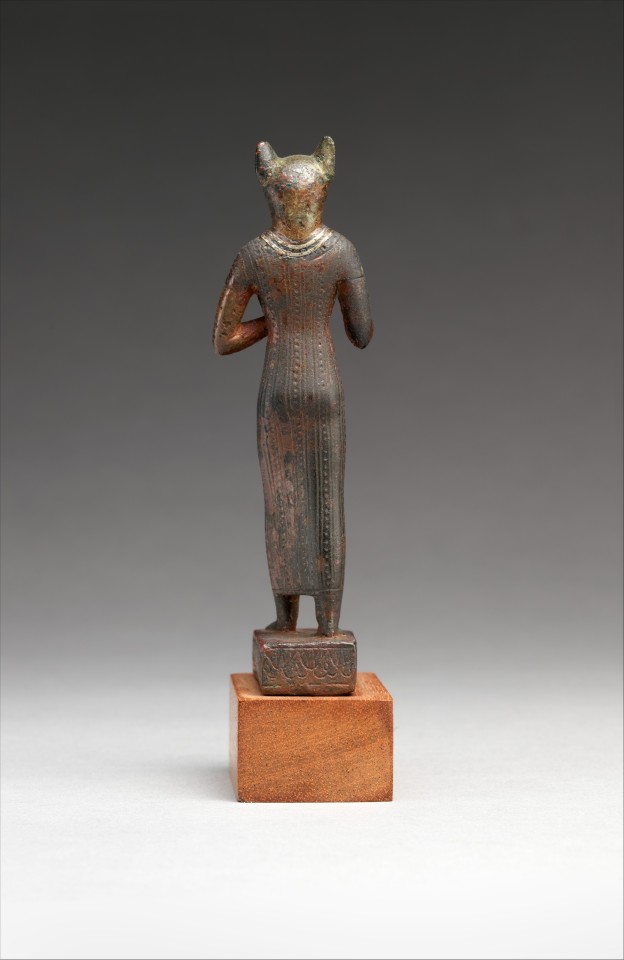
Bastet - Met Museum Collection
Inventory Number: 34.6.1
Late Period–Ptolemaic Period, 664–30 B.C.
Location Information: Location Unlisted
Description:
Bastet, here shown as a cat-headed goddess, was a powerful protective figure who also was known for her fertility. She could be represented with a lion head as well, but as a cat-headed goddess her peaceful traits were emphasized. Her personal adornments and garments are elaborate on statuettes, often more so than other goddesses, and she usually carries numerous attributes. This figure likely once held at least two separately-attached attributes, probably an aegis against her chest and a sistrum in her other hand. Her dress has an elaborate striped pattern with alternating dotted and lined bands. Bastet does not always wear a decorated dress, but it is much more common for her than for other goddesses. The patterning highlights its craftsmanship and quality; also, as some have suggested, the vertical banding may recall the striped fur of a cat.
Great attention to detail and color was lavished on this figure. Inlays are still visible in Bastet’s eyes, and alternating rows of precious metal and black bronze inlay form her broad collar. Also special to this piece is the base; rather than an inscription or blank register, as on most statuettes, this base bears a pattern of repeated lotus blossoms and buds.
#bastet#late period#ptolemaic#met museum#34.6.1#location unlisted#deities#deitiesw#womens clothing#LPWC#PWC
21 notes
·
View notes
Text

cupreous otter statue, Egypt, c. 664-30 (Late Period- Late Ptolemaic)
currently in the collection of the Metropolitan Museum of Art, accession no. 23.6.2
#isaac.txt#archaeology#art#egypt#egyptology#egyptian archaeology#ptolemaic egypt#late period#hellenistic
144 notes
·
View notes
Text



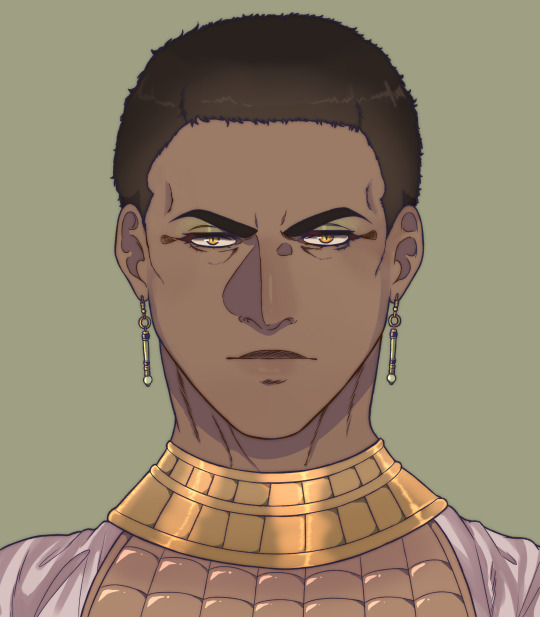

Introducing the main characters from the webcomic I'm developing on Ancient Egypt: Lucius, Djet, Iaret (Chloe), Khawy and Sempronia!
#webcomic#ancient history#pharaonic egypt#roman egypt#republican rome#imperial rome#ptolemaic egypt#new kingdom#late period#ancient egypt#ancient rome#vampires#my art#tfotds#the followers of the divine snake#smswart#thefollowersart#lucius#djet#iaret/chloe#khawy#sempronia
5 notes
·
View notes
Text
I think we can criticise netflix's Cleopatra without falling into nazi dogwhistles
#or rather nazi loudspeakers at this point lmao#@everyone saying this is afrocentrism/blackwashing ur wrong lol#i think this is just another side of american centrism and to a certain extent chauvinism#the kind that likes to portray itself as progressive but excludes the narratives to whom this history really belongs to#like i havent seen the doc in full but from the bits ive seen i dont think they consultes egyptian or greek#historians archaeologists egyptologists etc#+ they have colleen darnell in there and while i dont think shes bad her area of expertise isnt ptolemaic egypt#i dont doubt she knows her share of things about that period but thats a bit like making a documentary about the modern period#and having a historian who is an expert on the late roman empire/early middle ages in the pannel#+ shes mostly known for being a bit of a fashion influencer who happens to be an egyptologist#over just being an egyptologist
2 notes
·
View notes
Text



AN EGYPTIAN LIMESTONE LION HEAD SCULPTOR’S MODEL
LATE PERIOD, 30TH DYNASTY TO EARLY PTOLEMAIC PERIOD, CIRCA 380-300 B.C.
#AN EGYPTIAN LIMESTONE LION HEAD SCULPTOR’S MODEL#LATE PERIOD#30TH DYNASTY TO EARLY PTOLEMAIC PERIOD#CIRCA 380-300 B.C.#limestone#limestone sculptiure#ancient artifacts#archeology#archeolgst#history#history news#ancient history#ancient culture#ancient civilizations#ancient egypt#egyptian history#egyptian art#ancient art#art history
91 notes
·
View notes
Text

Cat Coffin
Egyptian, Late Period-Ptolemaic Period (664–32 BCE)
Ancient Egyptians dedicated animal coffins like this wooden example in temples, tailoring the enclosed mummified animal to one that had a specific connection with the deity whose favor was sought. The mummified animal’s soul acted as a messenger between the human and divine realms, seeking resolution to issues such as illness or crimes committed against its dedicator. The feline form of this empty coffin suggests that it was presented to Bastet, a goddess revered for her motherly qualities who often assumed the form of a cat or cat-headed woman.
95 notes
·
View notes
Text

Relief plaque of cobra on a neb basket Late Ptolemaic Period 400–30 B.C. Egypt
497 notes
·
View notes
Text
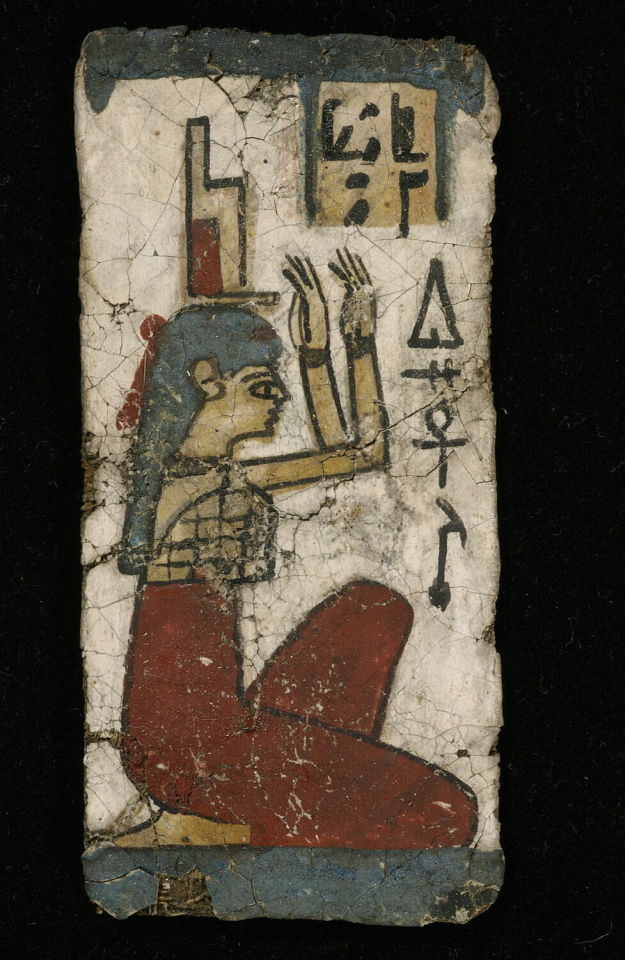
~ Decor: Isis
Period: Late Period-Ptolemaic Period
Date: 664-30 B.C.
Medium: Cardboard (glued and stuccoed canvas), Painting
#ancient#ancient art#history#museum#archeology#ancient egypt#ancient history#archaeology#egyptian#egyptology#egypt#isis#late period#Ptolemaic Period#664 b.c.#30 b.c.
1K notes
·
View notes
Photo

The falcon-headed crocodile at the Walters Art Museum in Baltimore. Late Period / early Ptolemaic.
450 notes
·
View notes